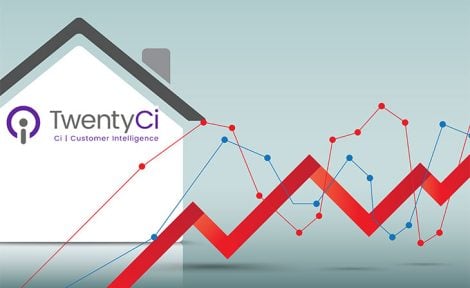House prices fall for fourth month in a row, according to Halifax price index
Four-month run is worst since the aftermath of the financial crisis, though prices are still up 2.5% on 2019 and activity levels are up

House prices have fallen for the fourth straight month in a row – but new mortgage inquiries are surging, according to the latest Halifax House Price Index.
The figures for the second quarter of 2020 showed the average asking price was £237,616, representing a fall of 0.1% on May and a quarterly change of -0.9%. However prices were up 2.5% in June compared with the same period in 2019.
Activity levels bounced back strongly in June, typically the busiest month for mortgage activity in the UK, with new mortgage inquiries up by 100% compared with May.
With prospective buyers also revisiting purchases previously put on hold, transaction volumes rose sharply compared with previous months.
Downward trend
Halifax managing director Russell Galley said: “It is notable as the first time since 2010 – when the housing market was struggling to gain traction following the shock of the global financial crisis – that prices have fallen for four months in a row.
“The near-term outlook points to a continuation of the recent modest downward trend in prices through the third quarter of the year, with sentiment indicators, based on surveys of both agents and households, currently at or around multi-year lows.
“Of course, come the autumn, the macroeconomic landscape in the UK should be clearer and the scale of the impact of the pandemic on the labour market more apparent.
“We do expect greater downward pressure on prices in the medium-term, the extent of which will depend on the success of government support measures and the speed at which the economy can recover.”

Impact ‘still lingering’
Industry experts said the figures showed the severity of the hit taken by the property market.
James Forrester, managing director of estate agents Barrows and Forrester, said the impact of the lockdown was “still lingering”.
“However, the positives are that prices remain higher on an annual basis despite the turbulent start to the year,” he added. “This is a much better indicator of market health and one that should reassure the nation’s home sellers, as well as bolstering the surge of buyer demand that has already flooded the market since lockdown restrictions were eased.
“We’re expecting to see a further boost in the form of a stamp duty holiday tomorrow, and while this has already drawn its critics, it will only act as a positive stimulus for the market in the long-term.”
Prolonged uncertainty
Mary-Anne Bowring, group managing director at Ringley and creator of automated lettings platform, PlanetRent commented: “Today’s figures show potential green shoots of recovery, with rising mortgage inquiries, although it is clear lockdown and prolonged uncertainty are still having their effect,
“With no clear route out the pandemic yet, the for-sale market is likely to be subdued as buyers and sellers act cautiously and put off major financial decisions.
“This is why government policies aimed at restimulating the housing market need to look beyond first-time buyers and existing owner-occupiers and tap into new sources of demand like buy-to-let landlords by scrapping the stamp duty surcharge they face.”
‘Extend Help to Buy’
Meanwhle Anthony Codling, CEO of property portal twindig, predicted further house price weakness “until the clouds of uncertainty lift” and repeated his call to broaden the reach of the Help to Buy scheme by making it available on all properties, not just new-builds.
“The Halifax points out that activity levels ‘bounced back strongly’ in June, but conclude that the near-term outlook points to a continuation of recent modest downward trends in house prices with market sentiment at or around multi-year lows,” he added.
“With first-time buyer mortgage loan-to-values falling, in the main, from 95% to 85%, does this suggest that lenders are readying themselves for a 15% fall in UK house prices.”
Transactions down 50%
Other key indicators highlighted in the Halifax report include:
- HMRC Monthly property transactions data show UK residential transactions in May were 48,450 – up by 16% from April as the Covid-19 lockdown measures began to ease. However, year-on-year the number of transactions in May was almost half (49.6%) the figure for May 2019.
- Mortgage approvals fell in May, with Bank of England figures showing that the number of mortgages approvals was 9,273 in May 2020, representing a 41% month-on-month fall, following a 72% fall in April. The year-on-year fall is 86%.
- The easing of the lockdown measures has resulted in a slight improvement in the outlook for sales and enquiries according to the latest set of results (May 2020) from the RICS Residential Market Survey. New buyer demand has moved to a net balance of -5% (from a record low -94% in April). New instructions to sell still remain in negative territory at -20% but are an improvement on April’s -97%. Newly agreed sales have edged up to -35% (from -93% previously).





